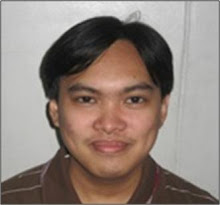This research has been accepted for publication in IEEE Transactions on Plasma Science. Publication date is on November 2011.
Digitized photographs lack the dynamic range of intensity values. So some parts of the photographs are not seen because it may be underexposed or overexposed. High dynamic range (HDR) imaging is used to combine in an image its low and high intensity values. Debevec and Malik has used image processing to develop HDR images from a set of low dynamic range (LDR) images with varying shutter speeds [1]. In this report, the method of Debevec and Malik is used to obtain a HDR image of a magnetized argon sheet plasma.
Digitized photographs lack the dynamic range of intensity values. So some parts of the photographs are not seen because it may be underexposed or overexposed. High dynamic range (HDR) imaging is used to combine in an image its low and high intensity values. Debevec and Malik has used image processing to develop HDR images from a set of low dynamic range (LDR) images with varying shutter speeds [1]. In this report, the method of Debevec and Malik is used to obtain a HDR image of a magnetized argon sheet plasma.
Several plasma images as shown in Figure 1 are taken under various exposure values (EV) using an Olympus FE-19 camera. All the images are taken at same stop of f/2.8. The shutter speeds of the images are determined from the properties of each image.
 Figure 1. Argon plasma images taken at various shutter speeds: (a) 1/200, (b) 1/160, (c) 1/125, (d) 1/100, (e) 1/80, (f) 1/60, (g) 1/50, (h) 1/40, (i) 1/30, (j) 1/5, and (k) 1/2 s. [3]
Figure 1. Argon plasma images taken at various shutter speeds: (a) 1/200, (b) 1/160, (c) 1/125, (d) 1/100, (e) 1/80, (f) 1/60, (g) 1/50, (h) 1/40, (i) 1/30, (j) 1/5, and (k) 1/2 s. [3]The response functions of all the color channels are determined using the Matlab code of Debevec and Malik [1]. For a detailed discussion about the process of obtaining HDR images, see Ref. 1. The response functions are shown in Figure 2.
The radiance maps of each channel are then obtained from the response functions. The radiance maps are shown in Figure 3. A jet colormap is used to represent the intensity values of the radiance maps.
 Figure 3. Jet false color images of radiance maps of all channels: (a) red, (b) green, and (c) blue. [3]
Figure 3. Jet false color images of radiance maps of all channels: (a) red, (b) green, and (c) blue. [3]Each radiance map has different scales. Linear tone mapping is used to make a composite image of the radiance maps. The linear tone mapped HDR image is shown in Figure 4. It is observed that the sheet plasma is actually tapered with its peak intensity near the anode.
 Figure 4. Linear tone mapped HDR image.
Figure 4. Linear tone mapped HDR image.The LDR and HDR images of the sheet plasma are shown in Figure 5. It is seen that the HDR image has a broad range of intensities compared with the LDR images. As the shutter speed is increased, the LDR image becomes saturated and the sheet plasma spreads out. Thus, the saturated LDR image may give rise to false information about the real size of the sheet plasma.

Figure 5. Upper part: LDR and HDR images. Lower part: Contrast stretched images.
By comparing the histograms of the LDR and HDR images as shown in Figure 6, it is observed that the HDR image has a broad range of pixel values compared with LDR images. For the underexposed LDR images, the high intensity values are missing. On the other hand, for the overexposed LDR image, the low intensity values are the ones missing.
I give myself a grade of 10 for this activity.
I give myself a grade of 10 for this activity.
References:
[1] P. Devebec and J. Malik, “Recovering High Dynamic Range Radiance Maps from Photographs,” SIGGRAPH’97.
[2] M. Soriano, "Activity 4: High Dynamic Range Imaging," 2009.
[3] L.M. Rosario et al., "High Dynamic Range Imaging of Magnetized Sheet Plasma," IEEE Transactions on Plasma Science (to be published).






















